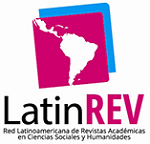Algoritmo de trazado de rayos para modelado de canales inalámbricos en entornos interiores.
DOI:
https://doi.org/10.15649/2346030X.806Palabras clave:
Trazado de rayo, modelado de canal, estimación de canal, propagación inalámbrica en interior.Resumen
En este trabajo es propuesto un algoritmo para modelar un canal inalámbrico en un entorno de interiores, usando el método
de trazado de rayos conocido como ¨método de imágenes¨ que considera el efecto dispersivo. Este algoritmo fue implementado en Matlab,
permitiendo simular escenarios de diferentes dimensiones y con diferentes materiales en sus paredes. El algoritmo propuesto fue validado con
un modelo analítico y un software comercial (Wireless Insite). Los dispersores se modelaron con las características dieléctricas de los materiales
que le componen, la frecuencia y la distancia, entre otras. Los efectos de reflexión, refracción y difracción también son considerados para
aumentar la precisión de la estimación. Con el trabajo propuesto se obtiene un algoritmo para estimar la potencia recibida en un canal inalámbrico
de interior que estima el comportamiento del canal. Una simulación de un escenario real es realizada con los resultados obtenidos dentro de los
parámetros de la recomendación ITU-R P.1238-7, asegurando su precisión, con un error relativo promedio de 3.85% y una diferencia inferior a
3 dB
Referencias
A. Navarro, D. Guevara y J. Gomez, “Modelado de canal inalámbrico empleando técnicas de trazado de rayos : Una revisión sistemática,” Sist. Telemática, vol. 12, no. 30, pp. 87–101, 2014.
A. Cavalcante y M. Sousa, “Computational parallelization strategy applied in full 3D ray-tracing wireless channel modeling,” Int. Microw. Optoelectron. Conf., 2005.
G.C. Montiel, “Aplicación Voip Para Dispositivos Móviles Sobre Redes Wifi Privadas,” Rev. Vínculos, vol. 8, no. 1, pp. 44–50, 2011.
H. Zhang, J. Guo, X. Xie, R. Bie y Y. Sun, “Environmental effect removal based structural health monitoring in the internet of things,” Proc. - 7th Int. Conf. Innov. Mob. Internet Serv. Ubiquitous Comput. IMIS 2013, pp. 512–517, 2013.
M. Zemede y K. Technologies, “Explosion of the Internet of Things : What does it mean for wireless devices ?,” no. June, 2015.
M. Batty et al., “Smart cities of the future,” Eur. Phys. J. Spec. Top., vol. 214, no. 1, pp. 481–518, Nov. 2012.
A. Sun, S. Rappaport, T.S. Thomas, y T. Ghosh, “A Preliminary 3D mmWave Indoor Office Channel Model,” in Computing, Networking and Communications (ICNC), 2015 International Conference on, 2015, pp. 26–31.
T. Kürner y A. Meier, “Prediction of outdoor and outdoor-to-indoor coverage in urban areas at 1.8 Ghz,” IEEE J. Sel. Areas Commun., vol. 20, no. 3, pp. 496–506, 2002.
J. Gomez, D. Guevara y A. Navarro, "Estimación de canal MIMO en ondas milimétricas mediante motores de juegos y aceleración por hardware", Santa Marta D.T.C.H.: Unviersidad del Magdalena, 2018.
A. Navarro, D. Guevara y J. Gomez, “A Proposal to Improve Ray Launching Techniques,” IEEE Antennas Wirel. Propag. Lett., vol. 18, no. 1, pp. 143–146, 2019.
Universidad de Sevilla, “CAPÍTULO 7: TÉCNICA DEL TRAZADO DE RAYOS,” pp. 163–196.
V. Degli-Esposti, “Ray Tracing Propagation Modelling : Future Prospects,” 8th Eur. Conf. Antennas Propag. (EuCAP 2014), no. EuCAP, pp. 2232–2232, 2014.
H. Bertoni, S. Torrico y G. Liang, “Predicting the radio channel beyond second-generation wireless systems,” Antennas Propag. …, vol. 47, no. 4, 2005.
V. Erceg, S.J. Fortune, J. Ling, A.J. Rustako y R.A. Valenzuela, “Comparisons of a computer-based propagation prediction tool with experimental data collected in urban microcellular environments,” IEEE J. Sel. Areas Commun., vol. 15, no. 4, pp. 677–684, 1997.
A.G. Kanatas, “A UTD Propagation Model in Urban Microcellular Environments,” IEEE Trans. Veh. Technol., vol. 46, no. 1, pp. 185–193, 1997.
K.H. Ng, E.K. Tameh, A. Doufexi, M. Hunukumbure y A.R. Nix, “Efficient multielement ray tracing with site-specific comparisons using measured MIMO channel data,” IEEE Trans. Veh. Technol., vol. 56, no. 3, pp. 1019–1032, 2007.
A.M. Cavalcante, M.J. De-Sousa, J.C.W.A. Costa, C.R.L. Francês y G.P. Dos-Santos-Cavalcante, “A new computational parallel model applied in 3D ray-tracing techniques for radio-propagation prediction,” Asia-Pacific Microw. Conf. Proceedings, APMC, vol. 3, pp. 1859–1862, 2006.
T. Zhou, H. Sharif, M. Hempel, P. Mahasukhon, W. Wang y S. Ci, “A novel ray tracing based multipath modeling approach for site-specific WLAN simulations,” IEEE Int. Conf. Commun., 2009.
A. Navarro, D. Guevara y J. Gomez, “Prediction of delay spread using ray tracing and game engine based on measurement,” IEEE Veh. Technol. Conf., vol. 2015, pp. 1–5, 2015.
A. Goldsmith, "Wireless Communications", Cambridge University Press, 2005.
S.Y. Seidel, T.S. Rappaport, S. Jain, M.L. Lord y R. Singh, “Path Loss, Scattering, and Multipath Delay Statistics in Four European Cities for Digital Cellular and Microcellular Radiotelephone,” IEEE Trans. Veh. Technol., vol. 40, no. 4, pp. 721–730, 1991.
Descargas
Publicado
Cómo citar
Descargas
Número
Sección
Licencia
La revista ofrece acceso abierto bajo una Licencia Creative Commons Attibution License

Esta obra está bajo una licencia Creative Commons Attribution (CC BY 4.0).









